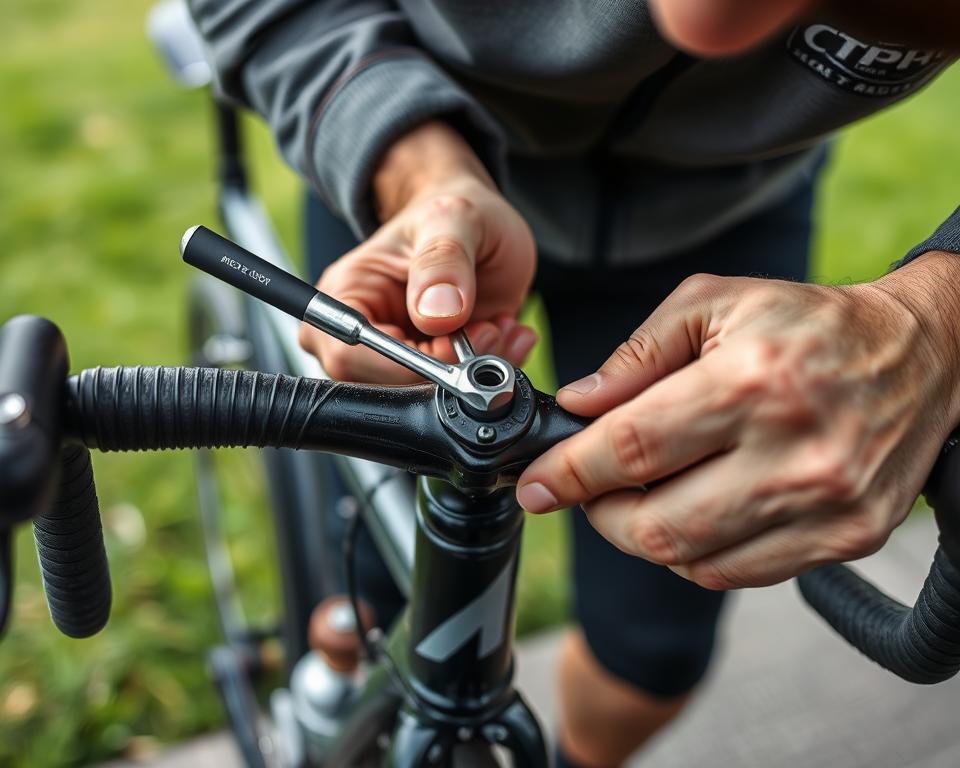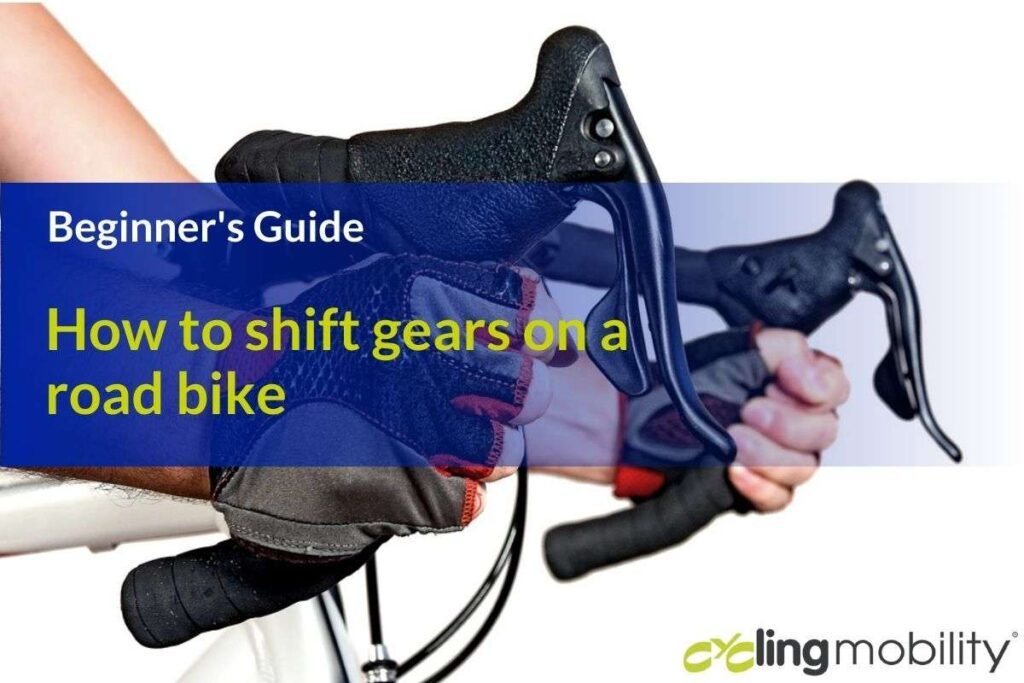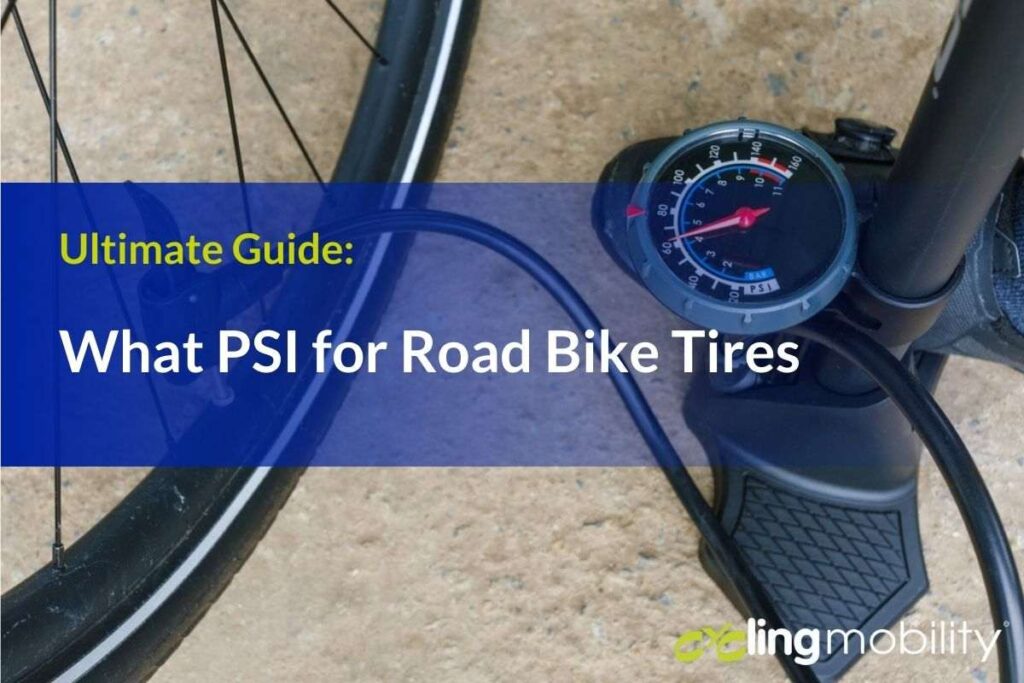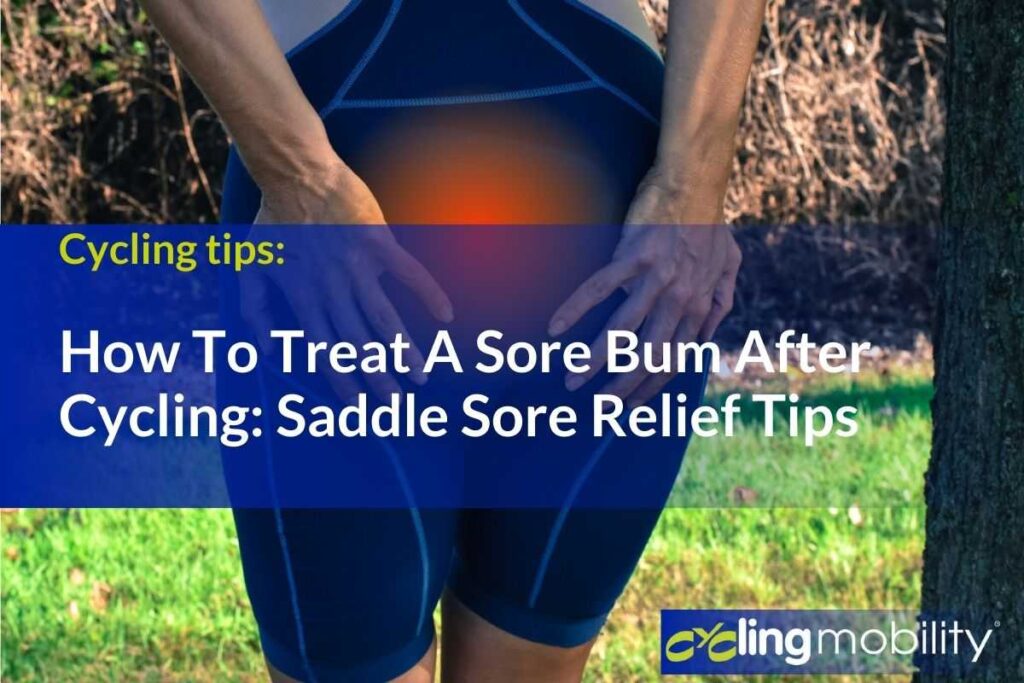Are you struggling to find the right balance between comfort and control on your road bike? Adjusting road bike handlebars might be the solution you need. Many cyclists overlook how crucial handlebar setup is, but taking the time to adjust road bike handlebars can transform your riding experience and greatly improve comfort and stability.
In this article, we’ll look at the key factors to adjust your road bike handlebars. We’ll talk about how to make your ride better and more comfortable.
Key Takeaways
- Proper handlebar adjustment can enhance comfort and control on your road bike.
- Understanding hand positioning, handlebar fit, and brake lever positioning are crucial for a personalized setup.
- Experimenting with handlebar materials, shape, and size can help you find the perfect match for your riding style.
- Regular adjustments and attention to details like stem height and reach can make a noticeable difference in your cycling experience.
- Investing time in optimizing your handlebar setup can lead to improved power transfer, better handling, and reduced fatigue on long rides.
Understanding Hand Positioning on a Bicycle
Getting your hands in the right spot on your bike’s handlebars is key. It helps you ride comfortably and control your bike well. Your hands should be placed so you can keep a natural posture and easily reach your bike’s controls.

General Hand Position
The usual riding spot for drop handlebars is called the “hoods” position. Here, your hands sit on the brake/shift levers, with your elbows slightly bent. This setup helps you control your bike and access its controls easily.
But, beginners might be tempted to hold the tops of the handlebars. This can be risky and reduce your braking power. More skilled riders might use the hooks or drops for better speed and control.
Stem Height / Handlebar Height
The height of your handlebars affects your comfort and control. Racers often have their handlebars lower than the saddle. Non-racers might prefer them even with or above the seat.
You can tweak your handlebar height by adding or removing headset spacers or using an adjustable bike stem. This lets you try different angles and lengths to find what works best for you.
Reach
The reach of your handlebars is also important. It’s the distance from the saddle to the handlebars. The best way to find the right reach is by trying different sizing stems.
Bike fitters might find it hard to suggest the right stem length without letting you test it. Trying a few lengths can help you find the perfect mix of comfort and control.
“Proper cycling hand positions are categorized into three speed ranges: up to 8 miles per hour, up to 18 miles per hour, and above 28 miles per hour.”
Adjust Road Bike Handlebars for Optimal Fit
Finding the right spot for your handlebars and shifters is key for comfort and control. You want your wrists to stay neutral. This means adjusting the hoods inward or changing their height on the bar.
Don’t tweak one thing to fix another. This can lead to more problems. First, set the handlebar angle. Then, adjust the levers for the best fit.

Handlebar and Shifter Hood Position
The shape of your handlebars affects your fit and comfort. Road bikes often have bars that are longer and more dropped for better aerodynamics. But, this might not fit everyone.
Bars with less drop, like 120mm or 110mm, are better for more riders. They make it easier to use the drops comfortably.
The width of your handlebars is also important. Narrower bars are best for road bikes, while wider bars are good for gravel. Your handlebar width should match your shoulder width for the best performance.
Handlebar Shape and Size
- Road bikes have three spots for your hands: the tops, the hoods, and the drops. Mountain bikes only have one.
- Adjusting handlebar width should make your hands shoulder-width apart on the hoods.
- The reach of handlebars is key. Road racers usually prefer 120–140 millimeters. But, older riders or those doing endurance might want shorter reach, 20–30 millimeters or more.
- Adjusting the handlebar angle towards you can make it more comfortable but less aerodynamic.

“Comfort on the bike is essential for every rider. It’s what transforms cycling into a long-term lifestyle.”
Refining Brake Lever Positioning
Getting your brake levers in the right spot is key for comfort and control. The way your levers reach and tilt can really change your ride.
Brake Lever Reach
Many road bike brake levers let you adjust the reach. This is the distance from the lever to the handlebar. You want it so your first knuckle can easily grab the lever. This makes your wrists feel better and helps you control the bike better.
Changing the brake lever reach is important for finding a comfy spot for all hand positions. Try out different settings to see what feels right for you and your riding style.
Lever Tilt
The tilt of your brake levers also matters a lot for comfort. If they’re straight, your hands might not feel natural. Tilt them inward to get a better wrist position and more control.
Adjusting the tilt can ease pain and make your hands feel more natural. Bike fitters say this small change can make a big difference in how comfortable and in control you feel.

“The angle of the bars should be such that you can ride in the drops with unbent wrists, except when reaching for the brakes.”
Remember, finding the best brake lever position takes time. Try different settings, make small changes, and listen to how your body feels. With a bit of trial and error, you can find the perfect mix of comfort and control.
Handlebar Materials and Construction
Choosing between carbon and aluminum road bike handlebars can really change your ride. Carbon vs. aluminum bike handlebars have their own perks. Knowing how they affect your ride can help you choose wisely.
Carbon handlebars are lighter and better at soaking up road bumps. This makes for a smoother, more comfy ride. But, they’re pricier than aluminum bars.
Aluminum handlebars are a bit heavier but give a connected feel that some like. This feel can help with control and speed, especially on tough paths or during sprints.
In the end, picking between carbon and aluminum handlebar materials depends on what you like and how much you’re willing to spend. Both can make your ride great if they fit you right.

“The choice between carbon and aluminum is largely a matter of personal preference and budget, and that either material can work well when the handlebar is properly fitted and adjusted.”
To get the best performance from your road bike handlebars, focus on three key elements: reach, drop, and width. These details can have a big impact on your comfort and control while riding.
- Reach: Adjusting the reach, or the distance to the handlebars helps reduce back strain and lets you shift gears more comfortably.
- Drop: Tuning the drop, or the vertical distance to the lower part of the handlebars, improves aerodynamics and adds to your comfort on long rides.
- Width: Choosing a handlebar width that matches your shoulders boosts control and stability, especially when you shift gears on varied terrain.
With the right handlebar setup, you’ll find it easier to shift gears smoothly, making each ride more enjoyable.
RELATED POST: How to Tighten Bicycle Spokes Like a Pro
Conclusion
Improving your road bike’s comfort and control starts with the handlebar setup. It’s key to get your hand position right. Adjusting the handlebar and shifter hood, and fine-tuning the brake levers, makes a big difference.
The material and build of your handlebar also matter. They affect how well your bike performs, its weight, and how long it lasts.
The handlebar is a key spot where you connect with your bike. So, it’s important to try out different settings to find what works best for you. This effort can make your rides more comfortable, controlled, and fun, no matter if you’re just for fun or serious about racing.
By using the road bike handlebar setup tips and optimizing the handlebar fit and position from this article, you’ll get the most out of your bike. Your cycling adventures will reach new levels of enjoyment.
FAQs
Why is adjusting my road bike handlebars important?
Adjusting your road bike handlebars is key for better comfort and control. Focus on hand positioning, handlebar fit, and brake lever placement. The right balance in these areas can greatly improve your ride.
How should I position my hands on the handlebars?
Place your hands in a comfy spot, usually with your arm and torso at a 90-degree angle. A slight elbow bend is best for comfort and control. For a more upright ride, the angle at your shoulder might be less than 90 degrees.
How do I adjust the height of my handlebars?
The handlebar height is affected by headset spacers and stem angle. An adjustable stem is the best tool for finding the perfect height. Aim for comfort, with racers often having bars below the seat and non-racers at or above the saddle.
How do I find the right stem length for my bike?
Finding the right stem length is vital for comfort and control. Use a sizing stem to test different lengths. Don’t just trust the fitter’s advice; try a few lengths to find what works best for you.
How should I position my handlebars and shifter hoods?
Aim for a neutral wrist position when adjusting the handlebar and shifter hood placement. Rotate the hoods inward or adjust their height on the bar. Avoid changing one element to fix another; instead, set the handlebar angle first and then adjust the levers.
What should I consider when choosing the shape and size of my handlebars?
Handlebar shape and size are crucial for fit and comfort. Road bikes often have bars for aerodynamics, but this may not suit everyone. Look for bars with a shallower drop for more comfort. Proper bar width, matching your shoulder width, is also key for control and stability.
How should I adjust the reach and tilt of my brake levers?
Shimano brake levers can be adjusted for reach. Set it so you can grab the lever with your first knuckle. This neutral wrist position reduces fatigue and improves control. Tilt the levers inward for a more neutral wrist position and better control.
What are the differences between carbon and aluminum handlebars?
Carbon handlebars are lighter and better at damping vibrations but are pricier. Aluminum bars are heavier but offer a more connected feel. The choice between carbon and aluminum depends on personal preference and budget. Both can work well when fitted and adjusted properly.






